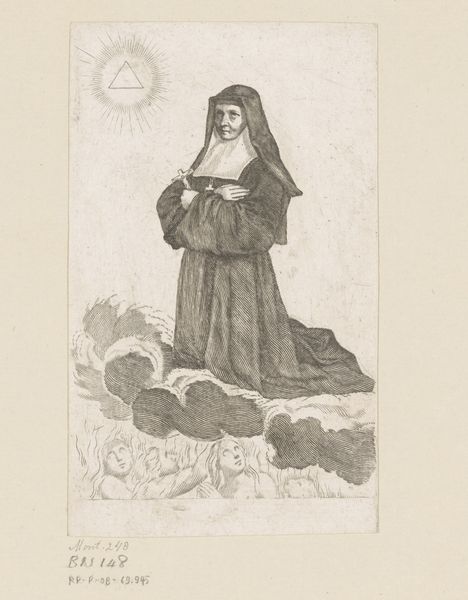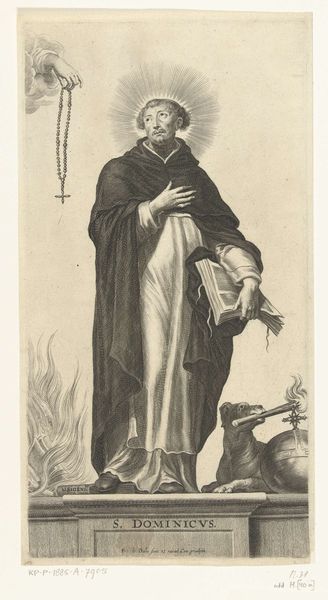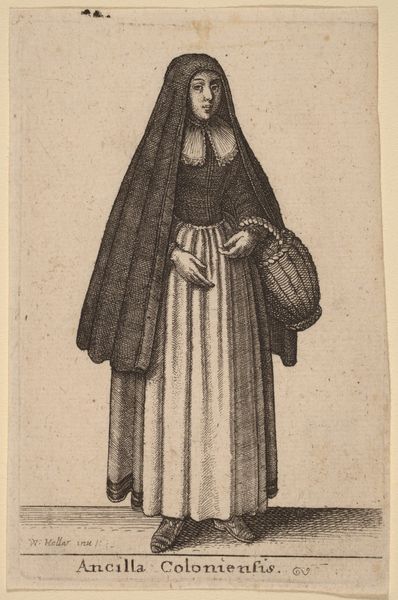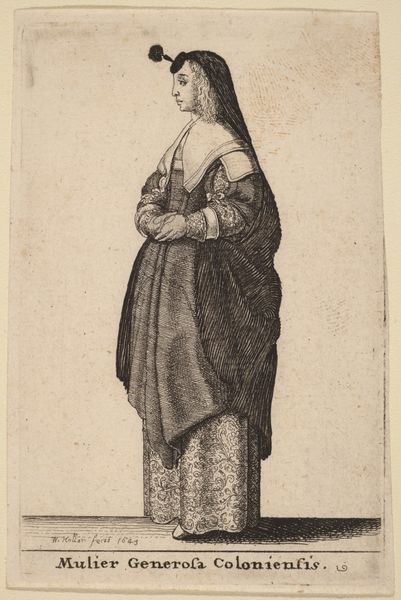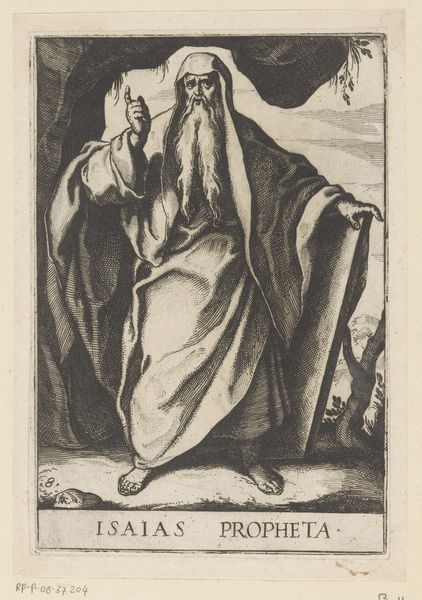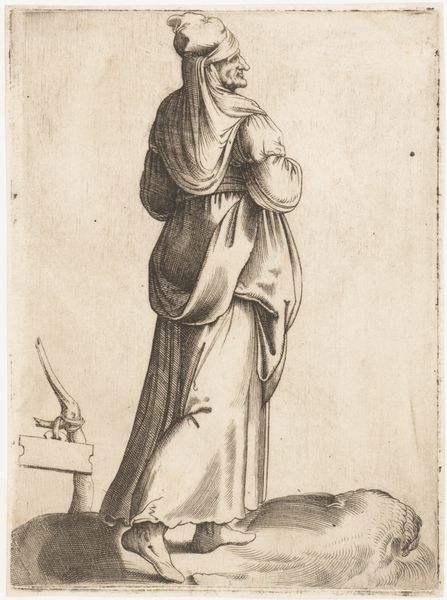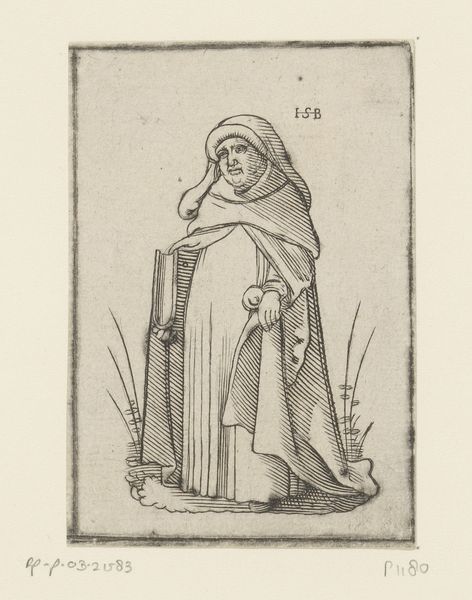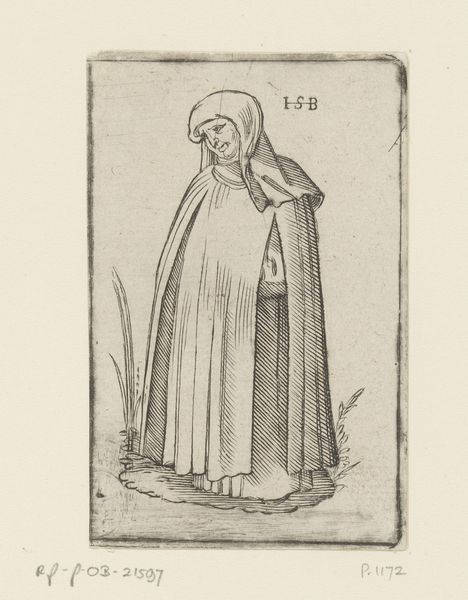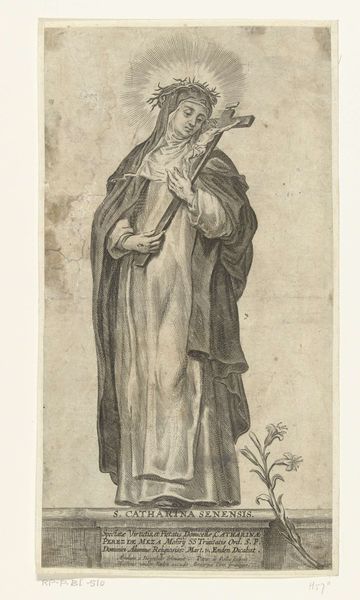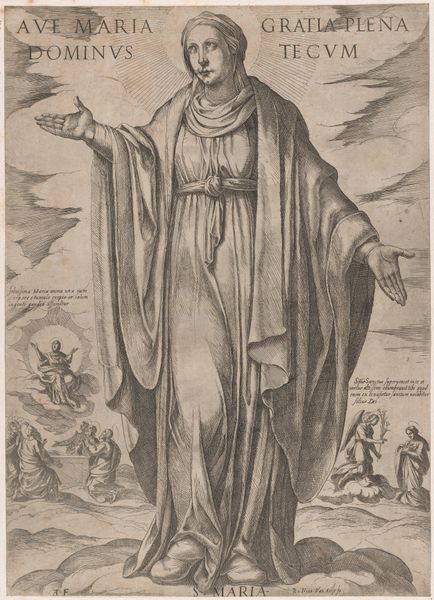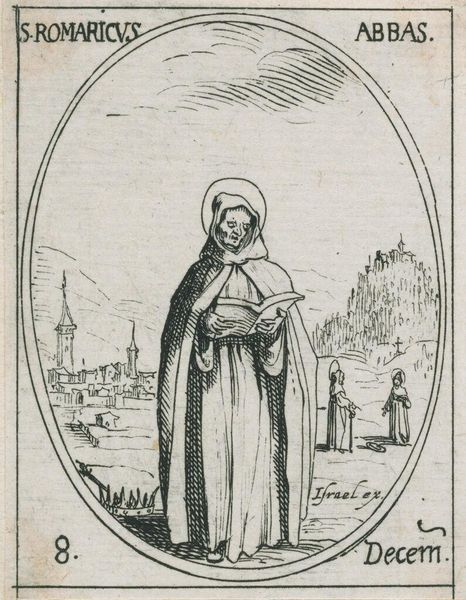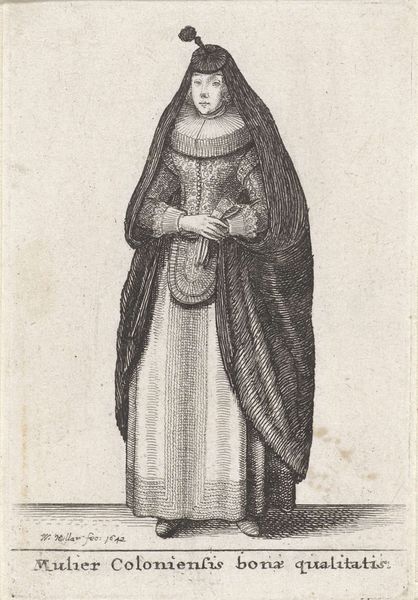
drawing, print, engraving
#
portrait
#
drawing
#
baroque
# print
#
figuration
#
cross
#
engraving
Dimensions: sheet: 6 1/8 x 3 11/16 in. (15.6 x 9.4 cm)
Copyright: Public Domain
Editor: This is Claude Mellan's "Sainte Jeanne Frémiot de Chantal," created sometime between 1641 and 1660. It's an engraving, so a print, currently residing at the Met. I find the figure, kneeling on the cloud above other figures in purgatory, and the use of light fascinating. How do you approach understanding this work? Curator: I immediately think about the tools and process of engraving. Mellan was known for his virtuosity. How the very act of incising the metal plate becomes almost performative in a religious context. We can talk about Mellan’s skill and also about who commissioned the print. Editor: The commissioning is interesting, since it would reveal how prints like this circulated at the time and to whom. Do you think the artistic choices served to enhance her sainthood? Curator: Exactly. Consider the deliberate mark-making, the labor invested, versus other means of dissemination available. It all adds to the preciousness, the perceived value, that would resonate with specific consumers and enhance the perception of Saint Jeanne's holiness and worthiness. Where do you see evidence of labor intensified for effect? Editor: Definitely the lines comprising the dark robes are clearly visible. This conscious visibility makes the engraving into something more than just an image of piety, almost revealing the process of creating that piety. Curator: Precisely. And think of the recipients—did the intended audience consider the act of creation itself a form of devotional practice, inextricably linked to the subject's spiritual merit? Editor: That makes me see how closely the process of creating the work is related to how viewers perceived its cultural significance. I see her now as produced, crafted as much as born a Saint.
Comments
No comments
Be the first to comment and join the conversation on the ultimate creative platform.
